PROTOCOL
of interrogation of a suspect
Jaworzno, July, 25, 1947
Last name and first name Nestorak Jan rel. Wladislaw Gembarowski.
Question: Please, describe a structure of the illegal organization of the Ukrainian Insurgent Army in this region.
Answer: I can only describe the structure of the civilian network, rather than the military, because I had not had any relation to the hundreds in my work, and I knew little about their structure, positions, or names. But I know the civilian network. I had to report about it for the “33” and he was supposed to take due measures and eliminate that person. However, for better conspiracy among our people, the liaisons delivering mail, I had to send my reports from this work to the Chief of Propaganda and to field commanders of district V, “Shamray.” Further, he had to send it to the ”33.” I had to write the reports for the month, starting from June, 1946, including.
Upon receiving these instructions from the “33” I gave my consent to the above mentioned proposals. After that, I had been performing the function of the investigator “S-B” from the territory of the village of Verkhrata. I continued to be the deputy chief for propaganda in District V. At that time, in summer 1946, I mostly stayed at home, in a village of Mrzygłody. But I have never noticed anyone from that place, from the village of Mrzygłody, who collaborated with the Polish Army and reported to them about the gangs. That is why my monthly reports, along with the progress reports on my activities as a deputy chief for propaganda to “Shamray” had never informed about any such people. It was only in September or October 1946, that I reported to the “33,” via “Shamray,” about Hac Maria, a daughter of Vasyl, who lived in the village of Mrzygłody, Lubacow poviat. Hac Maria can be characterized in the following way: since 1944, Hac Maria was part of the nationalist organization of the Ukrainian insurgent army, she was a medical nurse, where she caught an STD. For this reason Maria Hac demanded from the organization the money she needed for treatment. She possibly was receiving the money for some time, but she could not recover because she needed bigger amounts that the organization might have not wanted to pay. That is why Maria Hac could contact the C.M. [Civil Militia] or S.U. [Security Unit] in Tomaszow Lubelski, And reported to them about the activities of the organization in the village of Verkhrata, and about its members. She often went to visit Tomaszow. She had been seen there several times entering the C.M or the S.U. building. In addition, this person was getting money from somewhere, she dressed nicely, which raised the suspicion that she might have received the money from Tomaszow. Moreover, there was a fact when one time Maria Hac was spotted in Tomaszow entering the building of C.M. or S.U. on the following day, the soldiers came to Mrzygłody and organized a raid to catch people in the nearby forest. They arrested several persons from Mrzygłody and from Monastyr, who where members of the UPA organization. At that time, it had been fully confirmed that Maria Hac was collaborating with the army. Regarding the latter fact, I started gathering information about this on my own, to investigate into the matter. Maria Hac lived in a house of Jan Typa in Mrzygłody. All the data about Maria Hac collaborating with the army was received from him because he knew it best. Since the findings of this investigation added to my certainty that Maria Hac was betraying the UPA organization, in September, 1946, I reported about this to the “S-B commander” of the above mentioned “33” via “Shamray.” In this report, I mentioned that Maria Hac was betraying the UPA organization. That is why it was necessary that the “S-B” combat unit take the appropriate measures, and draw the relevant conclusions. It didn’t take long to receive the consequences following this report. In fact, in November or December 1946, Maria Hac was abducted from the village by the combat unit “S-B” of district V, and was killed. In order not to cast any suspicion and to cover all the tracks related to this murder, some person from the “S-B” organization (I do not know that person) asked Maria Hac whether she could go to the pharmacy in Tomaszow, and buy some medication for the organization. Maria Hac agreed, and on the next day she walked to Tomaszow-L. But the people from the “S-B” combat unit we’re waiting for her in the forest. They took her away, and she has never returned to the village since that time, and nobody has seen her again because she was killed. It happened on the basis of another report and the investigation conducted by another party. It was one specific fact because I was the mastermind behind that murder, and I was engaged in it. Apart from that, I have never committed any such facts since then.
Original
PROTOKÓŁ
przesłuchania podejrzanego
Jaworzno, dnia 25 lipiec 1947 r.
Nazwisko i imię Nestorak Jan rel. Gembarowski Władysław.
Pytanie: Proszę podać strukturę nielegalnej organizacji UPA na danym terenie.
Odpowiedź: Ja mogę podać strukturę tylko siatki cywilnej a nie wojskową, gdyż z sotniami w pracy swej nie miałem niс do czynienia i organizacyjnej ich budowy oraz zajmowanych stanowisk ani nazwisk niewiele znam. Natomiast siatkę cywilnej znam. Miałem meldować o tym w/w „33” raportem, a on już w związku z tym poczyni odpowiednie kroki i osobę tą usunie. Jednakowoż, dla lepszej konspiracji pomiędzy swymi ludźmi czyli łącznikami którzy rozwozili korespondencję, sprawozdania swoje z tej pracy, miałem kierować do szefa Propagandy i Pol-wych. re-jonu V-go „Szamraja”, a ten już miał przesyłać to do „33”. Sprawozdania miałem pisać do miesiąc, począwszy od m-ca czerwca 1946 r. włącznie.
Po otrzymaniu tych instrukcji od „33” wyraziłem swą zgodę co do propozycji w/w i od tego czasu objąłem funkcję śledczego „S-B” z terenu wsi Werchrata, będąc nadal z-cą [zastępcą] szefa Propagandy na V-ty rejon. W tym czasie t. j. latem 1946 r. w większości wypadków przebywałem w domu w przys Mrzygłody, jednakowoż nie zaobserwowałem wtedy by z tego terenu t. j. ze wsi Mrzygłody, ktoś współpracował z WP i donosił mu o bandach, dlatego raporty moje które wysyłałem co miesiąc wraz z raportami o mej działalności jako z-cy szefa Propagandy do „Szamraja” — nie donosiły nie o takowych osobach. Dopiero w m-cu wrześniu czy październiku 1946 r. złożyłem raport do „33” poprzez „Szamraja” o niejakiej Hac Marji s. Bazylego, zam. Mrzygłody, pow. Lubaczów. Z wspomnianą Hac Marją rzecz miała się tak: w/w Hac Marja od r. 1944 należała do nac. org. UPA jako sanitarjuszka i tamże zaraziła się weneryczną chorobą. Z tego względu Hac Marja zażądała od organiz. funduszy pieniężnych na leczenie, co prawdopodobnie przez pewien czas otrzymywała, jednakowoż nie mogła się wyleczyć, gdyż potrzeba było większych sum, których organizacja nie chciała jej prawdopodobnie przydzielić i z tego powodu Hac Marja miała wejść w kontakt z M. O. czy też U. B. w Tomaszowie-Lubelskim, donosząc tam o istnieniu organizacji na terenie wsi Werchrata i o osobach należących do niej. Takowa udawała się często do Tomaszowa, gdzie wdziano ją kilkakrotnie uchodzący do budynku M. O. czy U. B. Ponadto takowa otrzymywała skądś pieniądze i dobrze się ubierała, co rzuciło podejrzenie że pieniądze te dostaje z Tomaszowa. Był nawet taki fakt, że pewnego dnia wdziano jak Hac Marja była w Tomaszowie i wchodziła do budynku M. O. czy też U. B., a na drugi dzień przyjechało wojsko do Mrzygłód i urządziło obławę w sąsiednim lesie, oraz aresztowało kilka osób z Mrzygłód i Monastyrza, który należeli do organ. UPA. Wtedy upewniono się już zupełnie, że Hac Marja z wojskiem współpracuje. Co do tego, ja od siebie począłem ściągać informacje o tym i prowadzić w tej sprawie śledztwo. Wypomniana Hac Marja mieszkała w niejakiego Typy Jana w Mrzygłodach od którego to ściągnąłem wszystkie dane dotyczące współpracy Hac Marji z wojskiem, gdyż takowy najlepiej o tym wiedział. Ponieważ wyniki tego śledztwa dały mi pewność, że Hac Marja zdradza organizację UPA, w m-cu wrześniu 1946 r. podałem o tym w mienianym sprawozdaniu do „komandira S-B” w/w „33” poprzez „Szamraja”. W raporcie tym nadmieniłem, że Hac Marja zdradza organizację UPA i że w związku z tym należy, ażeby bojówka „S-B” przy V-ym rejonie, poczyniła odpowiednie kroki i wyciągnęła z tego konsekwencje. Na wyniki tegoż raportu nie długo czekałem, gdyż w m-cu listopadzie czy grudniu 1946 r. Hac Marja wstała przez bojówkę „S-B” z V-go rejonu uprowadzona ze wsi i zamordowana. Ażeby nie rzucić na kogoś podejrzenia i ażeby zatruć ślady tego mordu, ktoś z organizacji z „S-B” kto tego nie wiem, udał się do Hac Marji prosząc czy takowa poszła do apteki w Tomaszowie i zakupiła dla organizacji lekarstw, na co w/w Hac M. zgodziła się i drugiego dnia udała się w kierunku Tomaszowa-L., jednak gdzieś w lesie oczekiwali na nią ludzi z bojówki „S-B” który zep zabrali ją ze sobą i od tego czasu do wsi już nie powróciła i nikt ją więcej nigdy nie widział, gdyż takowa została zamordowana. Stało się to, na podstawie innego doniesienia i przeprowadzonego śledztwa innej strony. To był jeden fakt konkretny, gdyż byłem inspiratorem tegoż morderstwa do którego ja sam przyczyniłem się. Ponadto więcej takich faktów nie popełniłem.

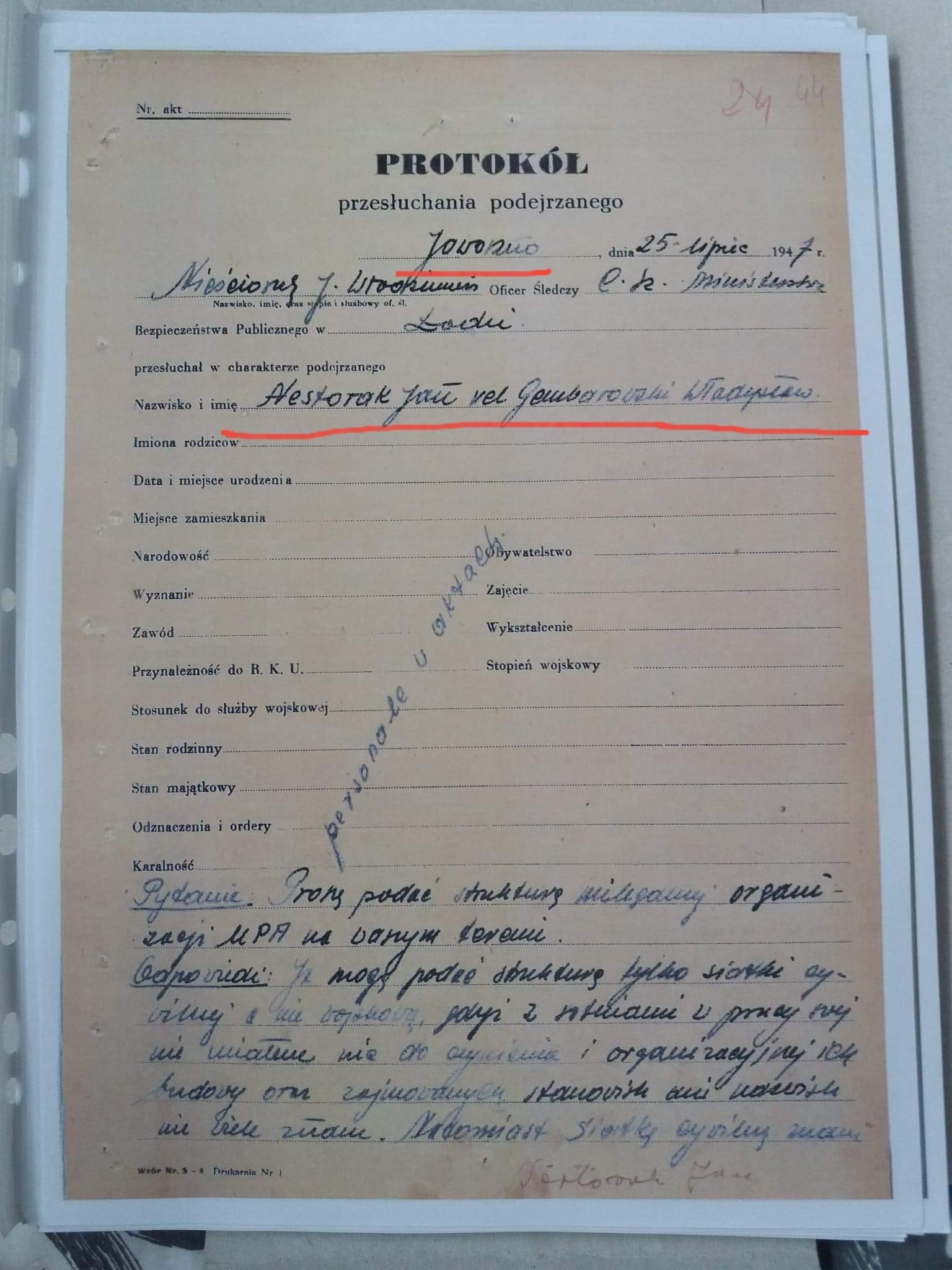
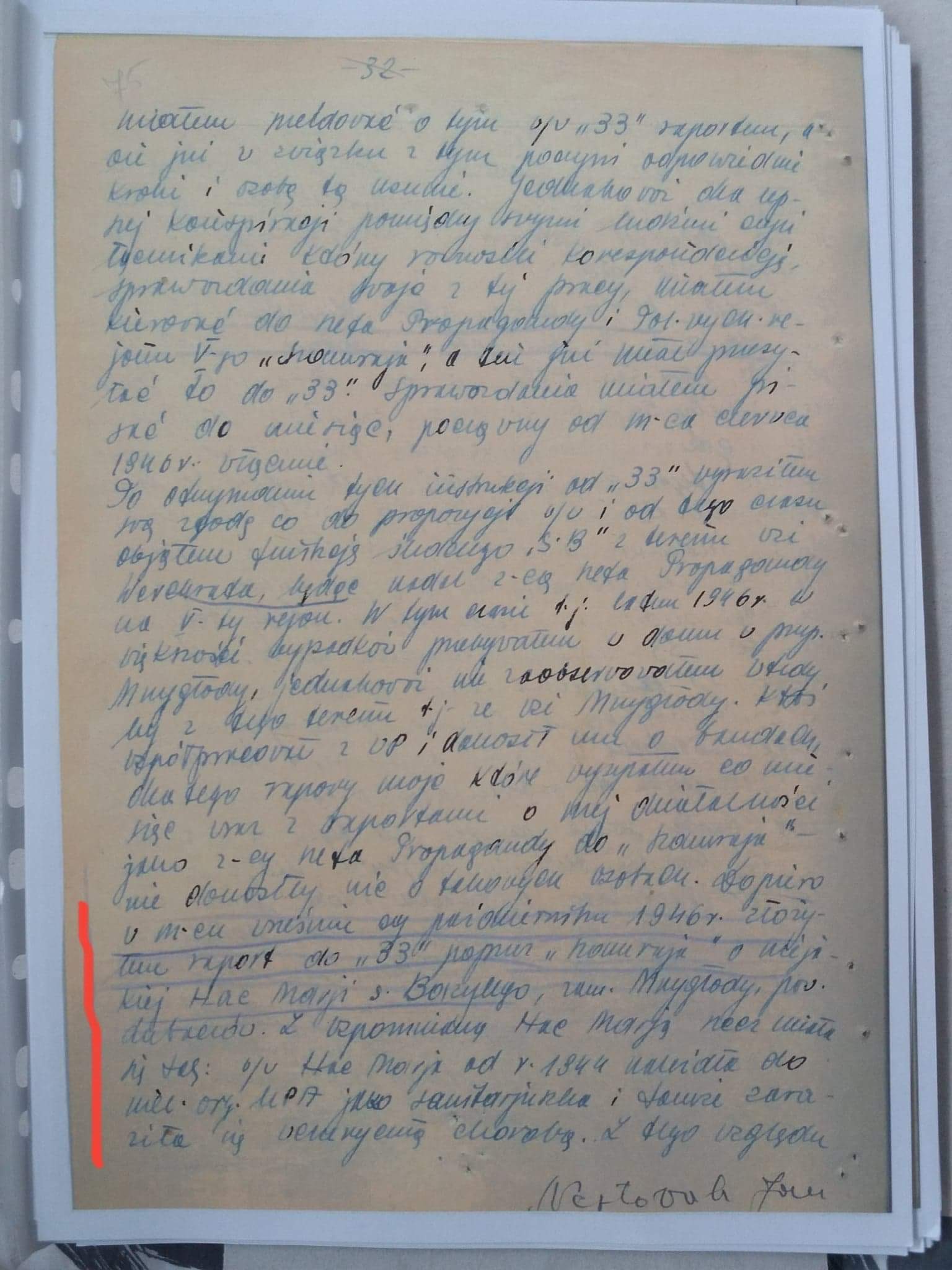
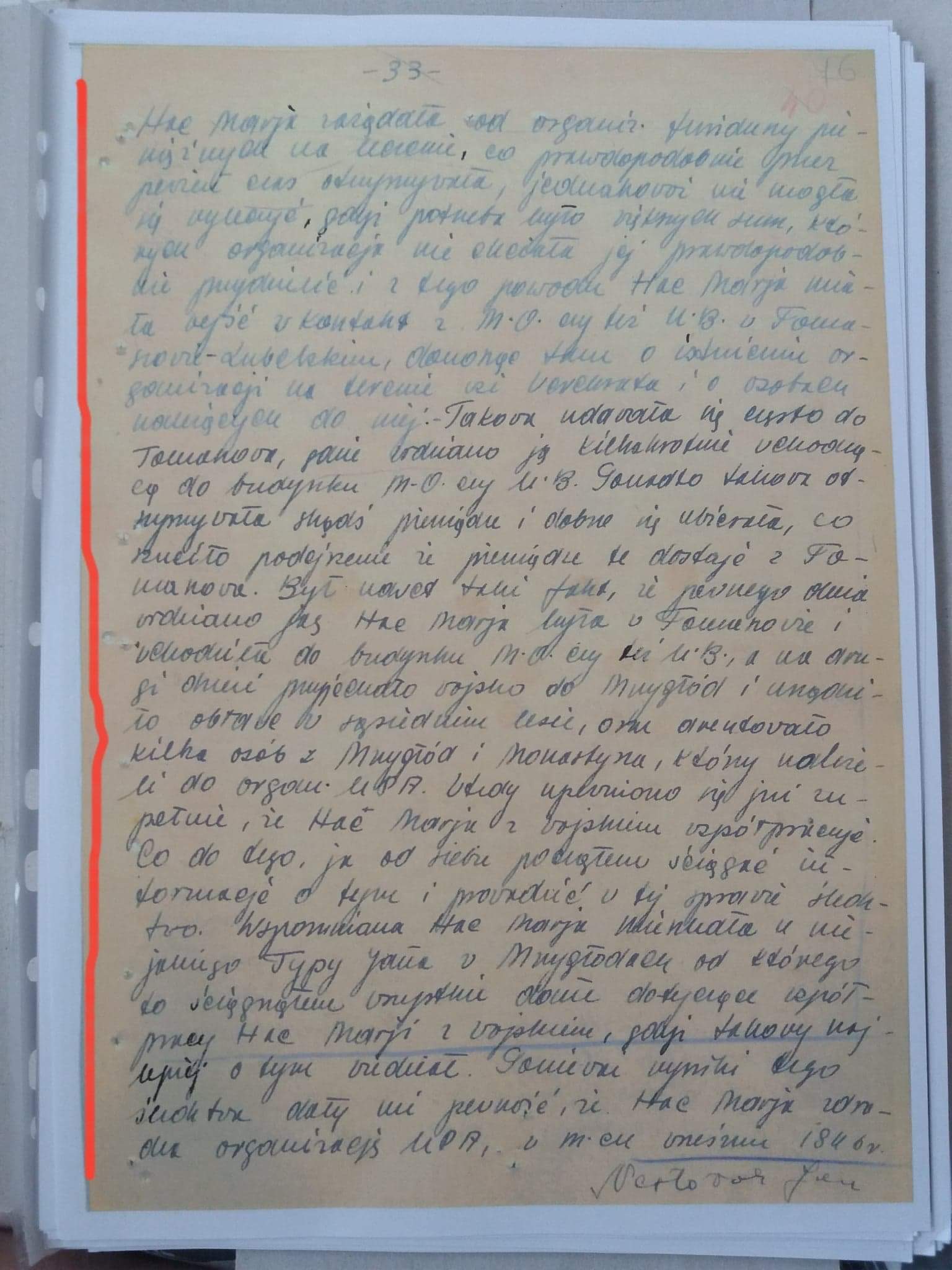
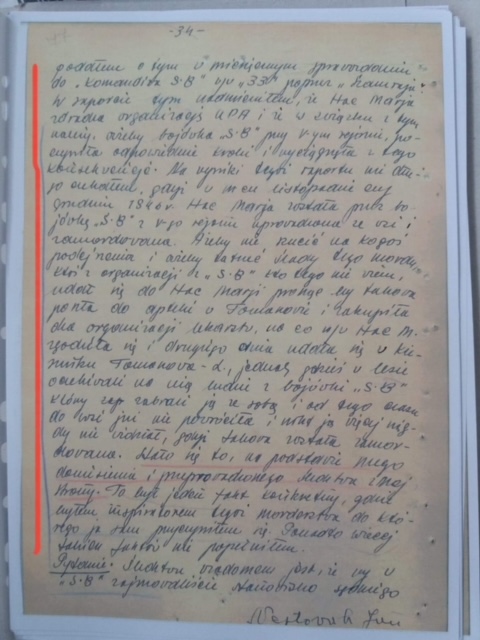
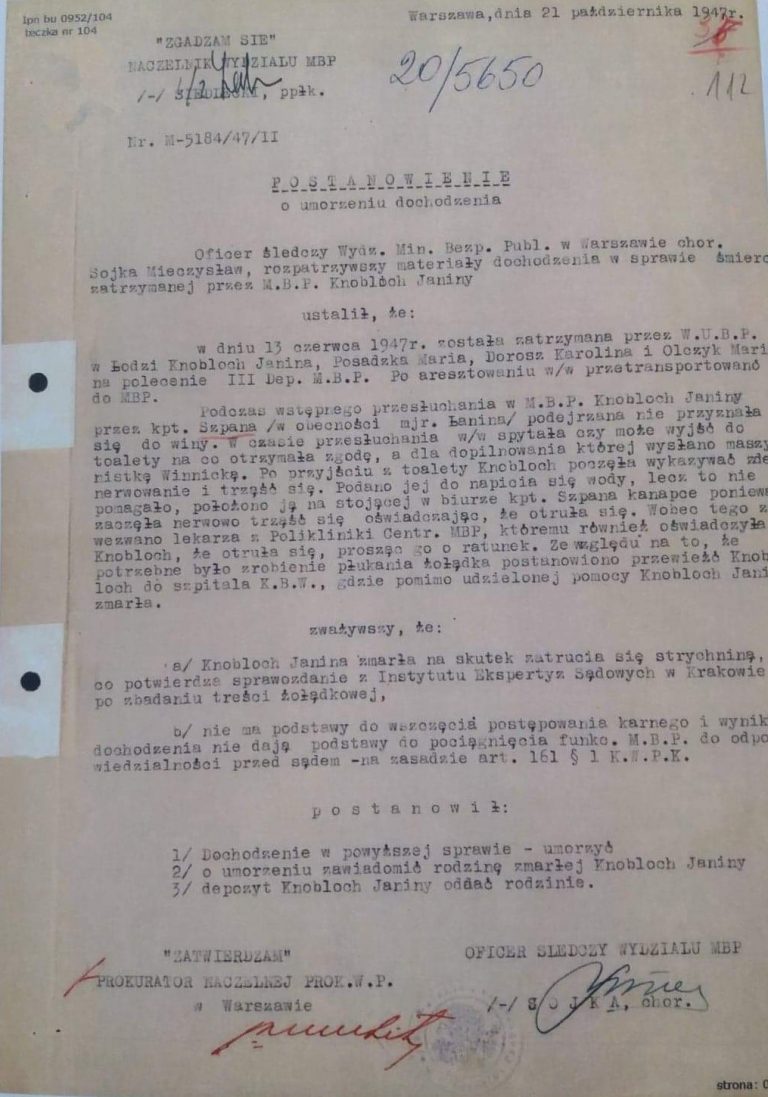
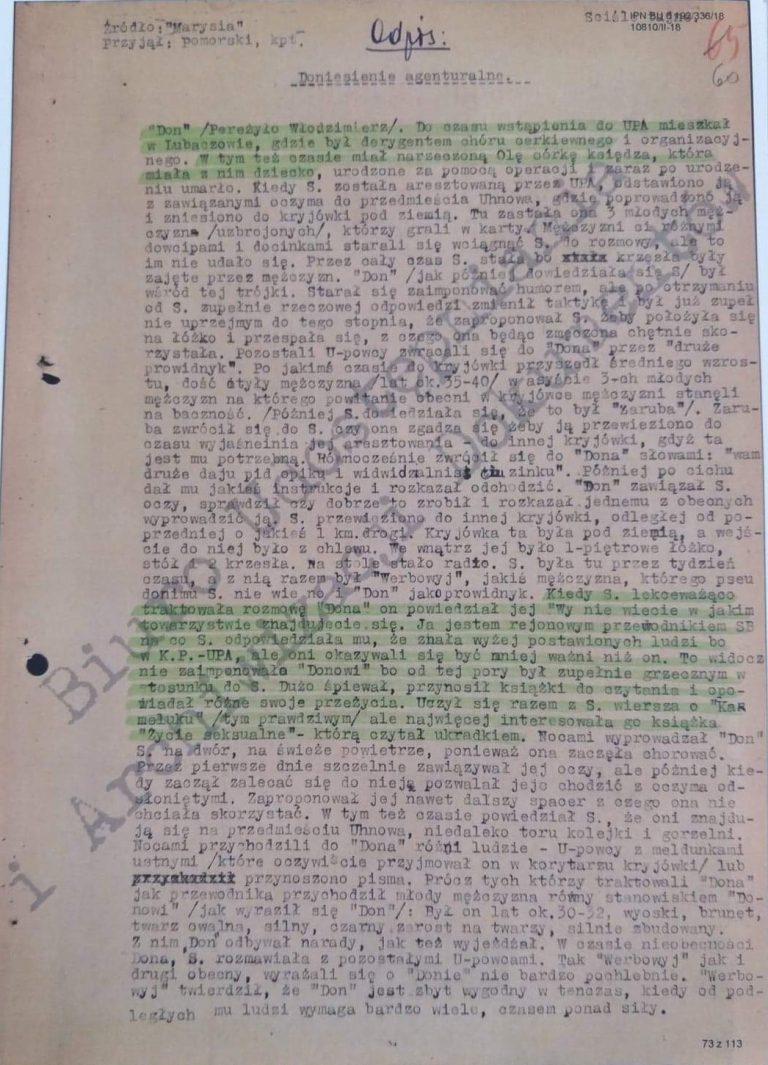


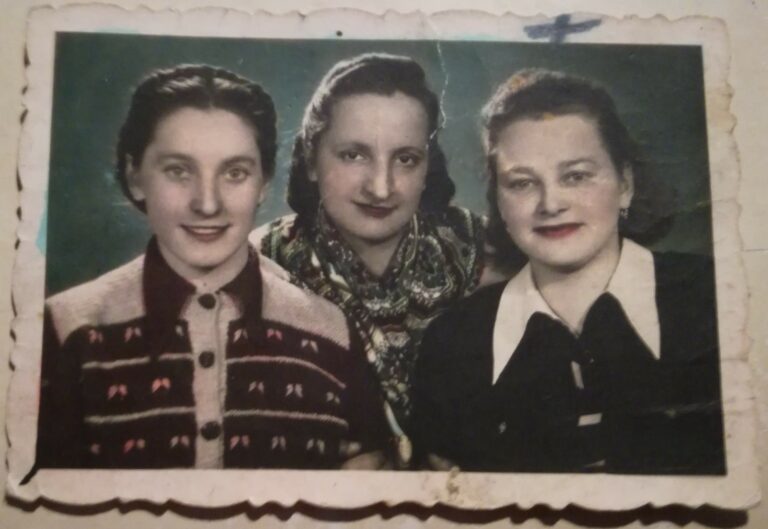
This is an excerpt from the transcript of a long interrogation of Ivan Nestorak and his activities in the Ukrainian underground. Based on the information he provided, a female liaison was murdered by the Ukrainian insurgency. Her name was Maria Hac, and she was part of the UPA’s medical service. She had an STD and asked for money for treatment. She contacted Polish authorities MO (Citizens’ Militia) or UB (Department of Security) in Tomaszów Lubelski. She was murdered by the units of SB (Sluzhba Bezpeky) OUN (Organization of Ukrainian Nationalists). Some potential topics that can be discussed based on this source are gender-based violence in the Ukrainian underground, treatment of Ukrainian women by the Polish secret police, and the hardships of work and life in the underground.